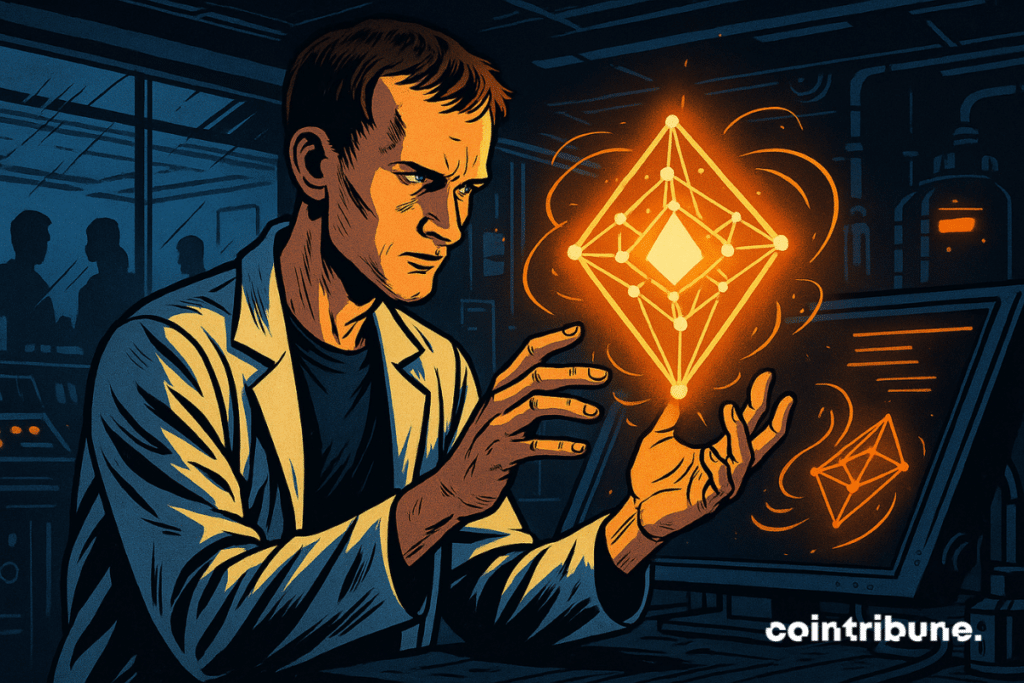Vitalik Buterin Reveals the Missing Link That Will Transform Ethereum Forever
Ethereum's creator just dropped the blueprint for the network's next evolution—and it's not what anyone expected.
The Scaling Breakthrough
Buterin's proposal tackles Ethereum's eternal bottleneck: transaction throughput. His solution bypasses conventional layer-2 approaches with a radical architectural shift that could potentially increase network capacity by orders of magnitude.
Zero-Knowledge Integration
The missing link centers on advanced cryptographic proofs that cut verification times while maintaining Ethereum's signature security. This isn't incremental improvement—it's foundational redesign that makes current scaling solutions look like training wheels.
Developer Ecosystem Impact
DApp builders get native privacy features and reduced gas costs without compromising decentralization. The upgrade path requires minimal code changes, avoiding the fragmentation that plagued previous Ethereum improvements.
Market Implications
Traders are already pricing in the announcement—ETH futures show increased bullish positioning despite traditional finance analysts dismissing it as 'another crypto fantasy.' Because clearly, Wall Street knows better than the guy who built the $400 billion ecosystem.
This isn't just another upgrade—it's Ethereum's missing puzzle piece that could finally deliver the network's original promise while leaving competitors scrambling to adapt.
 Read us on Google News
Read us on Google News
In brief
- Vitalik Buterin states that PeerDAS is the central element of Ethereum’s Fusaka upgrade.
- This technology allows nodes to verify blocks without storing the entire data thanks to erasure coding.
- Ethereum has just reached six blobs per block for the first time, revealing growing demand from rollups.
- Ethereum has just reached six blobs per block for the first time, revealing growing demand from rollups.
PeerDAS, a technical innovation at the heart of Fusaka
Vitalik Buterin has just unveiled an innovation that could transform the ethereum ecosystem. The co-founder identified PeerDAS (“Peer Data Availability Sampling”) as the key to scaling the network and its sustainability in the face of ever-growing demand.
Concretely, PeerDAS allows nodes to verify the existence of a data block without downloading it entirely. Instead of hosting the whole file, they rely on samples, then recomposed thanks to erasure coding.
This method, already proven in cybersecurity, fragments the data, adds redundancy, and then enables reconstruction even in case of partial loss.
This breakthrough breaks a historic constraint of Ethereum: each node is no longer forced to store all the data to contribute to the network. The result is twofold: increased capacity for transactions and preserved decentralization.
Buterin also highlights the system’s resilience: even if several actors act maliciously, the presence of a single honest validator is enough to guarantee the integrity of the process. An architecture that protects Ethereum from potential attacks while enhancing its processing power.
This evolution couldn’t come at a better time. Since the introduction of “blobs” with the Dencun upgrade, their use has exploded. In August, Ethereum hit a record with six blobs per block.
Layer 2 solutions like Base, Scroll, or Linea already occupy most of this space, generating over $200,000 in fees each week.
In this context, PeerDAS appears as a strategic response. By optimizing data management, it offers the network a way to absorb the growing demand without compromising its stability or decentralization.
Ethereum adopts a progressive strategy facing a long-term challenge
Buterin remains cautious, however. The number of blobs per block will not increase abruptly but in a phased progression. A too rapid scale-up, he warns, could create imbalances and put pressure on certain parts of the network.
The Fusaka schedule reflects this gradual approach: deployment planned for December 3, 2025, preceded by public tests on several networks and accompanied by a security audit with 2 million dollars in rewards to identify possible flaws.
But the challenge goes far beyond LAYER 2 alone. In the longer term, PeerDAS could also absorb part of the execution data of layer 1, thus freeing nodes from a currently colossal load.
This mechanism WOULD give Ethereum increased capacity to meet growing demand driven by DeFi, stablecoins, and asset tokenization, without sacrificing either the protocol’s neutrality or resilience.
This evolution is part of an ambitious roadmap. After Pectra and before Glamsterdam, Fusaka is not just a technical upgrade. It represents a true strategic building block for Ethereum’s future.
It reflects a clear desire to prepare the network to occupy a central place in global finance, at the very moment when banks, companies, and states increasingly consider blockchain as a critical infrastructure.
Thus, PeerDAS is not a simple technical refinement. It is a direct response to the scalability and neutrality challenges Ethereum faces. By betting on an innovation deployed cautiously but thought over the long term, Buterin seeks to gradually transform the network.
If Fusaka delivers as promised, Ethereum could reach a decisive milestone and confirm its ambition: to become the essential infrastructure for global digital finance.
Maximize your Cointribune experience with our "Read to Earn" program! For every article you read, earn points and access exclusive rewards. Sign up now and start earning benefits.

